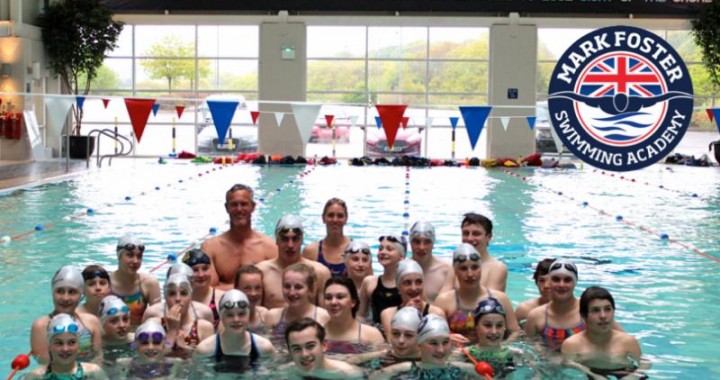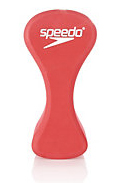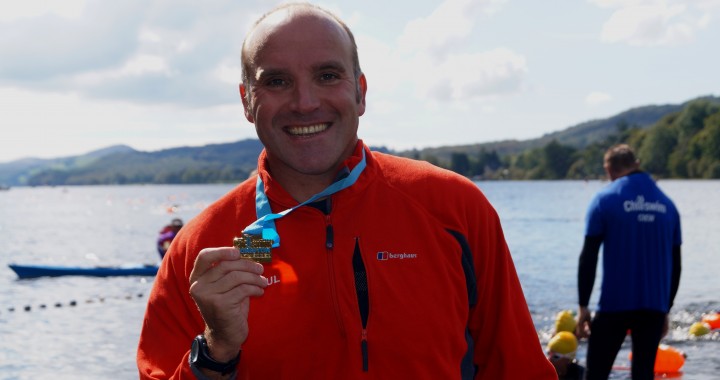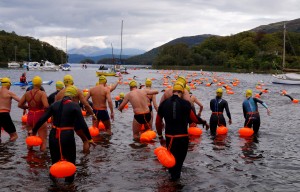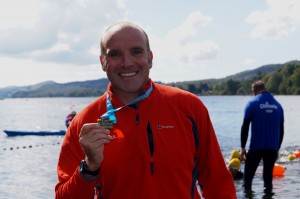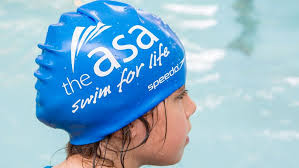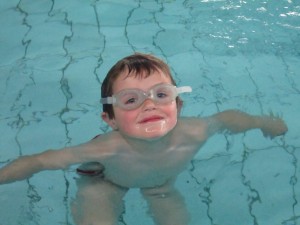This October half term, back by popular demand.
Mark Foster is a former 6 time world champion who is arguably one of the most successful swimmers in British History.
Due to their popularity and the feedback from his May swim camps, Mark has decided to run them again over the October half term, to help even more young swimmers be the best they can be.
His one day swim camps are designed with the next generation of competitive swimmers and athletes in mind and are backed by the ASA.
The swim camp is a unique opportunity for local children to be coached by some of the UK’s elite swimmers and sports coaches, including Mark and World Backstroke Champion Katy Sexton MBE.
Where are the camps running?
The one day camps will be running in the following locations:
- Leatherhead – Monday 27th October
- Basildon – Tuesday 28th October
- Coventry – Thursday 30th October
- Bristol – Friday 31st October
Who are they for?
Mark Foster’s Swim Academy is open to any fully competent* swimmer between the ages of 11 and 18. (*See the website for minimum requirements)
How much does it cost?
The day costs £95 which includes Mark’s Sporting Heroes Book and a swim cap.
How do I book?
For more information and for bookings please visit www.MFSA.co.uk.
Don’t forget spaces are limited to 60 per camp, so book your young swimmer’s place now to avoid disappointment.
Category Archives: News
EasyFundraising Latest Offers 11/09/14
Learning to swim straight from the ASA
With so many elements to think about when swimming up and down, from preventing your legs from sinking to perfecting your breathing pattern, heading in a straight line may become a bigger feat than expected.
Nobody wants to waste time and effort zig-zagging across the pool so how do you make sure you’re swimming in a straight line? The starting point is in maintaining a good body position.
BODY POSITION
Goggles are an essential piece of kit for anyone who wishes to maintain good position. With your face in the water, keep your eyes fixed on a point down and slightly forward.
Your head should fall into line with the natural position of your spine – imagine you have a rod through it, preventing you from putting your head up any further. If your hips drop, your smooth, straight body position will be lost.
A still, well-positioned head is the key to swimming straight. If you throw your head from side to side while swimming your body will be thrown off balance and you are likely to become quite disorientated too! However, learning to the correct rhythm of breathing is notoriously difficult.
First, the stroke must be broken down into smaller parts. Olympic coach Ben Titley, who trains the likes of Fran Halsall and Liam Tancock at the British Gas ITC Loughborough, provides us with tips from the top.
- When swimming freestyle, each hand should enter between your ear and shoulder. It may help to imagine a mirror reflecting your image on the bottom of the pool, with a line drawn down the centre. As your hand enters, it must not cross onto the opposing side of the body.
- On the same vein, as you enter the ‘pull through phase’ the hand should be kept under the body, but again, you must not pull across the centre line. This will stop your body rolling from side to side to ultimately throw you off balance. If your arms keep striding forwards, and not diagonally, your body will too.
- Using a snorkel will take breathing totally out of the stroke and you can focus on swimming in a straight line, using the bottom of the pool to guide you.
- By placing a pull buoy in between your thighs, your legs will be taken out of the equation, decreasing resistance and drawing your hips up to the surface. It gives you a chance to focus purely on your arms. For anyone slightly more advanced, or wishing to push themselves, a pull buoy can be placed between the ankles. The core is forced to switch on given that everything in between the lungs and buoy (which like to float!) wants to sink.
- If you have been maintaining a straight body with a snorkel, attempt it without after a while and monitor your progression.
- To keep a still head on backstroke, use a buoy to take weight off legs and draw hips up to the surface, and do double arm backstroke. This will prevent you worrying about arm position and allow you to simply swim straight.
Once you’re feeling confident about your body position and your head in the water, it’s time for some drills to improve your direction. Ben talks us through four of the best:
DRILL 1: FINS
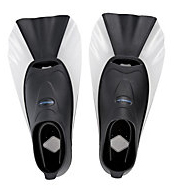
- For relatively advanced swimmers, fins may be used to kick without a board.
- To begin with, keep one arm extended ahead and the other arm by your side, then swap. Again, use a snorkel, or keep your mouth out of water (so you’re almost on your side) but look where you are going (slightly forward and down).
- If you are slightly more confident, breathing techniques can be practiced simultaneously.
DRILL 2: KICKING
- Isolating your kick is also beneficial for backstroke.
- This time, using fins, do flutter kick on your back. After doing this for a few lengths, begin rotating your body gently from side to side while keeping your head fixed. This will be your body’s natural motion when your arms are added.
- If even more advanced, to increase stability, enabling you to swim in a straight line, use one fin & one paddle (on alternate arms/legs) while swimming freestyle. This will test your body balance.
DRILL 3: FLOATING
- Floating drills may also be done to create good body position before applying it to the stroke.
- Place a pull buoy between your thighs or place at ankles and drift slightly off the wall (but don’t swim!). Stationary in the water, lie on your front with your face in the water.
- Move your arms slowly in a pendulum motion, all the while ensuring your body does not rotate or fly off in all sorts of directions. Not only will this get you used to holding your breath but will work your torso and promote balance and stability.
- Again, it is good practice to use a snorkel, allowing you to concentrate on one aspect of your body.
DRILL 4: BREATHING
- For the more confident swimmer, breathing drills will prepare you to put the whole stroke together.
- In between breaths, hold your head still in one position. Don’t roll it around as your body rotates – this will jeopardise your co-ordination and balance.
- Take two rhythmic strokes, then on the third stroke, rotate your head (without lifting) and breathe. Don’t over-rotate as this will throw you off balance again. Take your head back to the centre line and repeat.
FURTHER READING
- Once you have mastered swimming straight you’ll want to go swimming even more. Read our tips and advice on how to hold off fatigue here.
- Sign up for MySwimfit for your FREE online swimming coach and to gain access to our exclusive 20% Speedo discount.
- Go shopping! The Speedo shop has a huge range of accessories including training fins and pull buoys.
- Leave a comment below or head to Ask an Expert with a specific question about your technique.
http://www.swimming.org/swimfit/swimfit-tips/how-to-swim-straight/13711/
Beeches Veteran Paul Bates Swims to Conistan Victory
Perry Beeches SC masters swimmer; Paul Bates , rounded of what has been a perfect summer of open water swimming around England, by winning the prestigious ChillSwim Conistion Water ‘End To End’ event at the weekend.
Bates, joined over 500 swimmers from all over the UK and abroad early on Saturday morning on the shores on Coniston to take on the challenging 5.25 mile swim. This ChillSwim event is the biggest mass participation long distance open water race in the UK and attracts the best open water swimmers from around the country to swim in one of the most famous and stunning stretches of water in England, Paul swam in just skin, in temperatures around 16 degrees and covered the length of Coniston in just over 2 hours 20 minutes to win 40-50 age group and to come a fabulous 7th overall .
It was Pauls 10th open water event of the summer, which has taken him all over England from Lake Windermere to the Cotswolds and from Windsor to Manchester and Coniston to name just a few! He’s hoping that 2015 well be even better…
If anyone is interested in joining Paul in the joys open water, then swimmers should contact Perry Beeches SC for further details.
The British Gas ASA Learn to Swim Pathway
Perry Beeches SSS are proud to follow the British Gas ASA Learn to Swim Pathway. We are committed to giving our swimmers the best possible start in their journeys as swimmers.
Abigail Turner, our Learn to Swim Coordinator, will be producing her second parent / guardian newsletter in the near future, and will include more details re our Learn to Swim program then.
Supported by attractive certificates and badges as a reward, the British Gas ASA Learn To Swim Pathway ensures your child receives the best possible instruction based on the swimming expertise of the ASA.
The Pathway takes your child on a journey from the first splash to developing confidence and competence in the water.
Click here (L2S Pathway JP) to see a presentation from the ASA, explaining the British Gas ASA Learn to Swim Pathway.
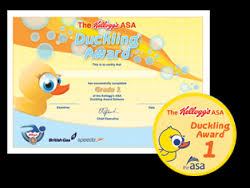 It starts with the ASA Foundation Frameworkbefore moving on to the movement skills of the ASA Learn to Swim Framework Stages 1 to 7.
It starts with the ASA Foundation Frameworkbefore moving on to the movement skills of the ASA Learn to Swim Framework Stages 1 to 7.
The final part of your child’s journey is the ASA Learn to Swim Framework Stages 8 to 10.
This is also known as the ASA Aquatic Skills Framework.
Your child’s journey through aquatics starts with Foundation, a programme for developing early-years water confidence, encouraged through sessions such as ‘adult and child’ and pre-school sessions.
Emphasis is on the development of very basic motor skills and an introduction to water and the swimming environment through fun and games.
 ASA Learn to Swim Framework (Stages 1-7)
ASA Learn to Swim Framework (Stages 1-7)
These stages of the British Gas Learn to Swim Pathway take your child through FUNdamental Movement. They are based on developing skills, movement in the water, and having fun.
Stage 1 – This stage helps develop safety awareness, the ‘class’ scenario, basic movement skills and water confidence skills. Swimmers may use aids, such as armbands and floats.
Stage 2 – This stage focuses on safe entry to the water, including jumping in, basic floating, travel on the front and back up to a distance of 5m, and rotating the body to regain an upright position. Swimmers may use armbands and floats.
Stage 3 – More on developing safe entries into the water – including submersion – travelling up to 10m on the front and back, and progressing water safety knowledge and body rotation skills from the previous stage.
Stage 4 – This stage aids the learner in developing the understanding of buoyancy through a range of skills. Also covered is refining kicking techniques for all strokes. The swimmer has to swim 10m to a standard directed by the ASA.
Stage 5 – During this stage swimmers develop ‘watermanship’ through sculling and treading water skills and body complete rotation. They perform all strokes for 10m to a standard provided by the ASA in the Learn to Swim Framework.
Stage 6 – Developing effective swimming skills – including coordinated breathing – across all strokes is the focus of this stage. Learners also have to swim a distance of 25m using a stroke of their choice. Children learn about aspects of water safety.
Stage 7 – Children develop quality stroke techniques up to 100m incorporating the skills they have learned, and combine them to develop a linked routine. They also complete an obstacle course combining skills accomplished through stages 1-7.
ASA Aquatic Skills Framework – (Stages 8-10)
These stages are called the FUNdamental Sport Skills of the British Gas ASA Learn to Swim Pathway. They are discipline-specific and build on the swimming skills learned in Stages 1-7. They have been developed with the grass roots programmes of the individual sports so are great if your child wants to take up competitive swimming, water polo, synchro, or diving.
Further details can be found on the ASA website – http://www.swimming.org/go/parents/learn-to-swim/
Congratulations on Becoming a Lifeguard
Congratulations go to Dominic Blackwell, who recently spent a week of his own time on a course, to become a qualified lifeguard. Many congratulations to you 🙂

